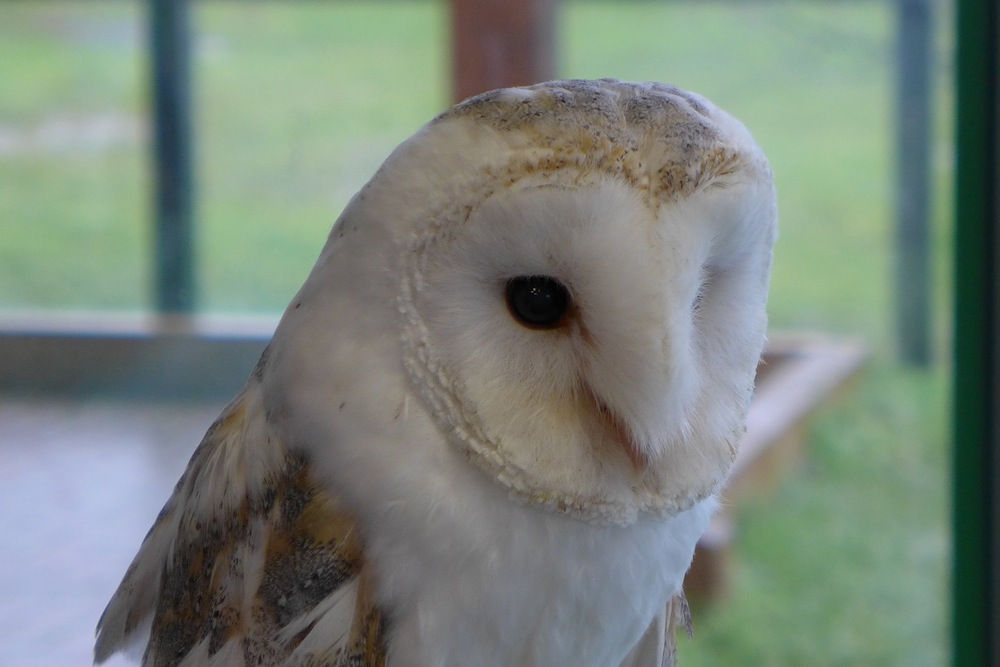
The dawn chorus is at its loudest during the month of May and, for song birds, this is the peak of their nesting season. Barn owls, however, begin mating behaviour in late winter and can lay eggs as early as March. By the time you’re reading this, our local barn owls could already be feeding their young. Barn owls hunt in the margins of fields and in the edge of our subconscious. They are a white shape you catch from the corner of your eye as daylight fades to dusk. Seldom seen, they do leave tell-tale signs of their presence – luckily for us.
Home to roost
In the forgotten corner of a farmyard is an ivy-clad stone barn. I go through a heavy wooden door and climb a rickety ladder into the hay loft. There is a faint musty smell emanating from the darkness. I can just make out a pile of dark brown pellets on the floor, some splashed with tell-tale white droppings. Above the pellets is an oak roof beam that has clearly been a roosting site for a barn owl. Many birds of prey produce pellets but because owls have regular roosting sites, their pellets can accumulate in large quantities.
Barn owls typically swallow prey whole and regurgitate the fur and bones as a pellet. These pellets are a fascinating record of what the owl has been eating. When they are soaked in water, the fur softens and various bones float to the surface. It is a rather macabre mix of leg bones, pelvic bones, jaws and even complete skulls. Studies of owl pellets have discovered that the most important prey for barn owls are voles. Voles have distinctive yellow incisor teeth, making their skulls easy to spot within the pellet.
Barn owls are efficient hunters – their feathers enable them to fly without making a sound. They silently quarter the edges of fields, listening for the movement of small mammals. They have the most sensitive hearing of any animal ever tested; the distinctive heart-shaped facial disc captures sound waves and directs them to the inner ear. Their ears are at slightly different heights, enabling them to pinpoint the exact location of their prey… which they swiftly dispatch with powerful talons.
Fighting for life
Most birds only start incubating their eggs once they have all been laid, meaning that all the eggs hatch at roughly the same time. Barn owls start incubation as soon as the first egg is laid, so the owlets within a brood vary in age and size. This can result in an owlet being more vulnerable to starvation when trying to compete with siblings for food. This is a particular problem during periods of wet weather – barn owls’ wings aren’t waterproof, so they can’t hunt in the rain.
When I check old nest sites and roosts, all too often the barn owls are no longer there. Their population in Shropshire has declined. They depend on rough grassland in which to hunt, as this is where voles tend to thrive. Unfortunately, this habitat is not as common as it once was. Another factor contributing to the decline of barn owls can be a lack of nesting sites as barns are converted to houses and hollow trees are felled. However, boxes can now be incorporated into barn conversions and also fixed in trees to provide homes for these amazing birds.
After a few weeks, I examine the owl pellets from the hay loft. I immediately spot a number of tiny moths crawling over them. I manage to get a photo and later identify it as a skin moth. The larvae feed on animal fibres and are common in owl pellets, where they feed on the fur. Pellets are also often home to larvae of clothes moths and it is likely that this was their ancestral home. The natural world is composed of life cycles within life cycles. The skulls hidden within the owl pellets are devoid of eyes. Lost souls, they are destined to stare out forever and yet see nothing. Despite all the death and decay within the pellet, a moth cocoon silently breaks open and new life emerges.
Do one thing for wildlife this month…
We have plans to boost the barn owl population at Severn Valley Country Park – but we need your help! This year we’ll be allowing a large area of amenity grass to turn into rough grassland as habitat for barn owls. As the next stage of the project, we’d like to build a nesting tower nearby. This will look like a miniature barn and have lots of potential nesting and roosting sites for barn owls.
We have the technical drawings, but building the tower will cost around £10,000, and we need sponsors to help make the dream a reality. If any local companies or individuals would like further details, contact me at edward.andrews@shropshire.gov.uk or call 01746 781192.






